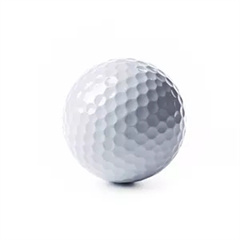The science of golf glove materials involves the careful selection and engineering of materials to enhance grip, comfort, durability, and performance for golfers. Golf glove materials are designed to address various factors, including grip on the club, breathability, moisture management, durability, and flexibility. Here’s a breakdown of the science behind golf glove materials:
1. Grip Enhancement:
- Golf glove materials are chosen for their ability to provide an optimal grip on the club handle. This is achieved through the use of materials with the right texture, tackiness, and surface patterns.
- The microtextures on the glove’s palm and fingers create friction, which is crucial for a secure hold on the club.
- Material science is employed to develop patterns and surfaces that enhance grip without causing discomfort or restricting movement.
2. Breathability and Moisture Management:
- Golfers often sweat during a round, especially in warm conditions. Proper material selection helps manage moisture to keep the hands dry and comfortable.
- Many golf gloves incorporate breathable materials, such as synthetic mesh or perforated leather, to allow airflow and wick moisture away from the skin.
- The science behind moisture-wicking technology involves capillary action, where moisture is drawn away from the skin and dispersed across the fabric’s surface to evaporate quickly.
3. Durability:
- Golf gloves need to withstand repeated use and the wear and tear that come with it. Durability is achieved through material strength and construction techniques.
- Leather is a common choice for golf gloves due to its natural durability. The selection of high-quality leather and the tanning process are essential for glove longevity.
- Synthetic materials are engineered to be resistant to abrasion and wear, making them a durable option.
4. Flexibility and Comfort:
- Golf glove materials must be flexible enough to allow a full range of motion in the hands and fingers. This is crucial for a golfer’s swing.
- Material science plays a role in developing materials that offer both flexibility and durability, ensuring that the gloves don’t become stiff over time.
5. Thermal Properties:
- Cold weather golf gloves are designed with thermal properties to keep the hands warm in chilly conditions. Insulating materials and lining are used to trap heat and maintain hand temperature.
- The thermal properties of these materials rely on their ability to minimize heat transfer and maximize heat retention.
6. Water Resistance:
- Rain gloves and some all-weather gloves are engineered with water-resistant properties to maintain grip in wet conditions. This often involves hydrophobic materials that repel water.
- The science behind water resistance includes understanding the surface tension of water and how to prevent water molecules from sticking to the glove’s surface.
7. Weight and Thickness:
- The weight and thickness of golf glove materials can impact a golfer’s feel and control. Material engineering aims to strike a balance between durability, thickness, and weight to optimize performance.
In summary, the science of golf glove materials involves a combination of material selection, engineering, and design to enhance grip, comfort, moisture management, durability, and performance for golfers. Manufacturers continually innovate and refine materials to offer golfers the best possible experience on the course.


















